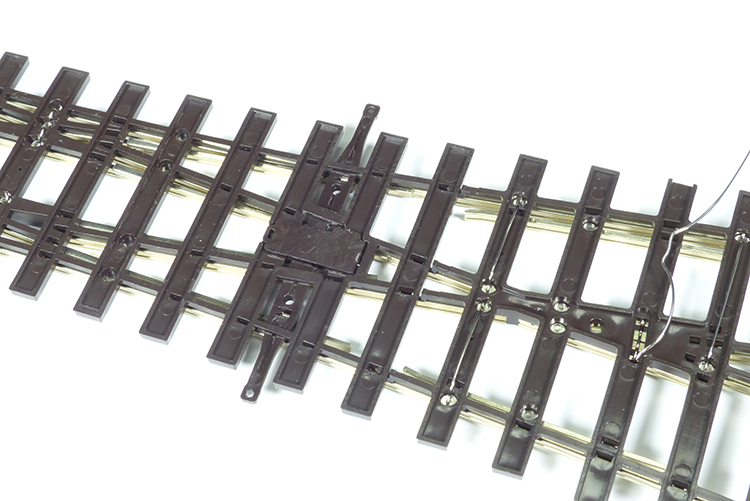13 July 2022
|
As the manufacturer's Electrofrog and Insulfrog ranges of points and crossings are phased out, Howard Smith examines their replacements.
Detail Code 75 track is now widespread and it’s the benchmark for modern RTR locomotive and rolling stock standards. Unifrog points have been available for a few years and we’ve kindly received three samples from Peco of its new and most-complex configurations in Code 75 track – its (SL-U1194) long frog crossing, (SL-U1190) double slip and (SL-U1180) single slip.
'Insulated' and 'live frog' refers to whether the central crossover section on any type of crossing receives power, or not.
Peco's Insulfrog and Electrofrog points and crossings are to be replaced with a universal equivalent, known as Unifrog, offering advantages to users familiar with both previous types.
In a nutshell
- Insulfrog points can create problems for short-wheelbase models, or those with problematic pick-ups. Wiring is greatly simplified – the polarity outputs to all directions are directly linked to the toe of the point, while the centre section is unpowered.
- On Electrofrog points, the frog polarity is linked to the direction of the point. Modellers preferring a more reliable form of frog polarity switching have often resorted to separating this link, cutting wires to the underside or rails above, enabling the frog to be controlled via a switch or motor.
- Unifrog points are intended to replace Insulfrog and Electrofrog turnout designs, offering the modeller control over the polarity of the frog.

How it works
Unifrog points behave in a similar fashion to an Insulfrog point. However, rather than the frog being moulded in insulated plastic, this is now tooled to support four pieces of conductive rail. Each piece of frog rail is insulated, though wired together to the underside with a piece of spot-welded wire. This wire is critical for smooth operation, because it can be soldered to the internally-switched output of many modern point motor designs such as Circuitron's Tortoise or DCC Concepts' Cobalt range, changing the frog polarity only if the point motor has successfully 'thrown' the point.
The stock rails are wired to the closure rails at the factory, which in turn are connected to the corresponding point rail. This means the turnout, bar the tip of the frog, is live, with no extra wiring required. Unifrog gives modellers the best of both worlds.
As supplied, the turnout is wired live, except for the frog tip and wing rails, and can be used from the packet without further modification. If the point is used to isolate a section of track, the point can revert to Insulfrog-type behaviour by removing the wire that joins the closure and stock rail. This will need to be done before laying and ballasting the track, however.

What we like:
- Unifrog turnouts aren’t power routing, and this is left to the modeller. It’s the best way I feel, and the way I’ve always wired points.
- Three wires are all that is required on a standard point to control frog polarity, one of which – to the frog – Peco has already provided. Solder a wire to the stock rails at the toe of each point, and solder these to the outer poles of a single pole double throw switch (SPDT). The centre connection to this switch is the one you’ll solder to the frog wire.
- Many slow-action point motors already have SPDT switches integrated, in which case, it is better to use these than add complexity to layout wiring. For a double slip, the same applies, using two point motors, rather than one. The frog of these switches is isolated from the trackwork, so no additional gaps or insulated rail joiners are required on the point rails.
- For DCC users, the wires between closure rails and the appropriate stock rail should eliminate shorting should a wheel bridge the gap between the switch and stock rails. Routes will be live at all times, too.
- Points require no modifications under normal operating circumstances from DC or DCC users for reliable operation and this makes them an attractive proposition.

The verdict
Now that access is granted to more specific turnout configurations in Unifrog format, modellers won’t need to carve away at the plastic underside of points, or attack them with a slitting disc in the name of ‘improvement’. Rail blades are correctly chamfered, chair and bolt detail is ever present, while atop sleepers we find a positive impression of the wooden grain. All told, detailed and much-needed new track – recommended.


